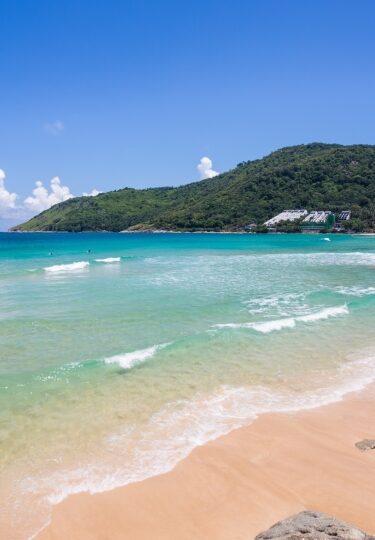The best time to visit Phuket is the dry season, from December to March, which usually brings clear, blue skies and calm seas.
Phuket has a tropical climate, as the island lies at just under eight degrees north of the equator. The dry, cooler season, therefore, is relative. In reality, the weather here is hot and often humid all year round, which is what makes this such a popular vacation destination.
The sea temperature is balmy throughout the year, averaging a delightful 83°F (28.5°C) in December and January, the coolest and busiest months. Phuket has a defined rainy season between May and October, when the southwest monsoons bring even higher humidity and considerable rainfall.
Visiting Phuket by Season
Summer
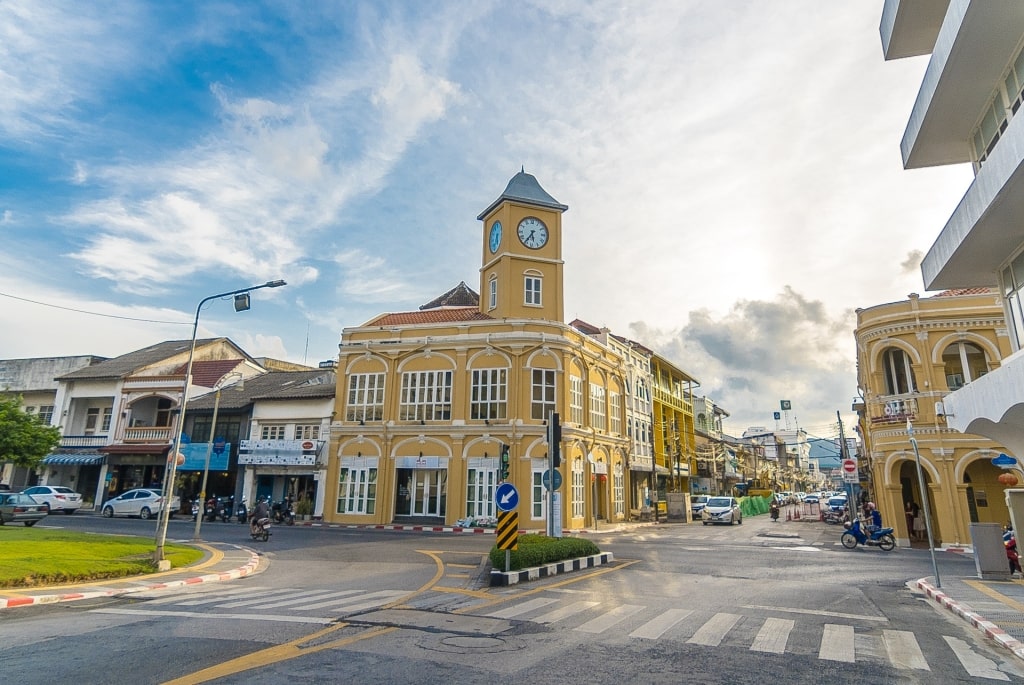
Old Town Phuket
June, July, and August are the peak of the monsoon season in Phuket. The weather is hot year-round, with little temperature variation. During the summer months, the humidity makes the days and nights feel hotter. Expect average daily temperatures of 82.3°F (28°C).
June is the wettest month of summer, with an average of 10.4 inches (265mm) of rain and 19 rainy days. Nonetheless, there’s still an average of five hours of sunshine per day; monsoon does not mean constant, unrelenting rain.
Summer also means bigger waves, making June, July, and August a popular time for surfing on the island’s west coast.
Fall
September, October, and November see the end of the monsoon season, with drier weather being ushered in towards late November. As the monsoon tends to have two peaks, the second of which is September and October, these two can be particularly wet months.
November, on the other hand, is a good time to go to Phuket before the winter rush. Expect an average of 7.7 inches (195mm) of rain, with average temperatures of 81.8°F (27.6°C) and six hours daily of sunshine.
Winter
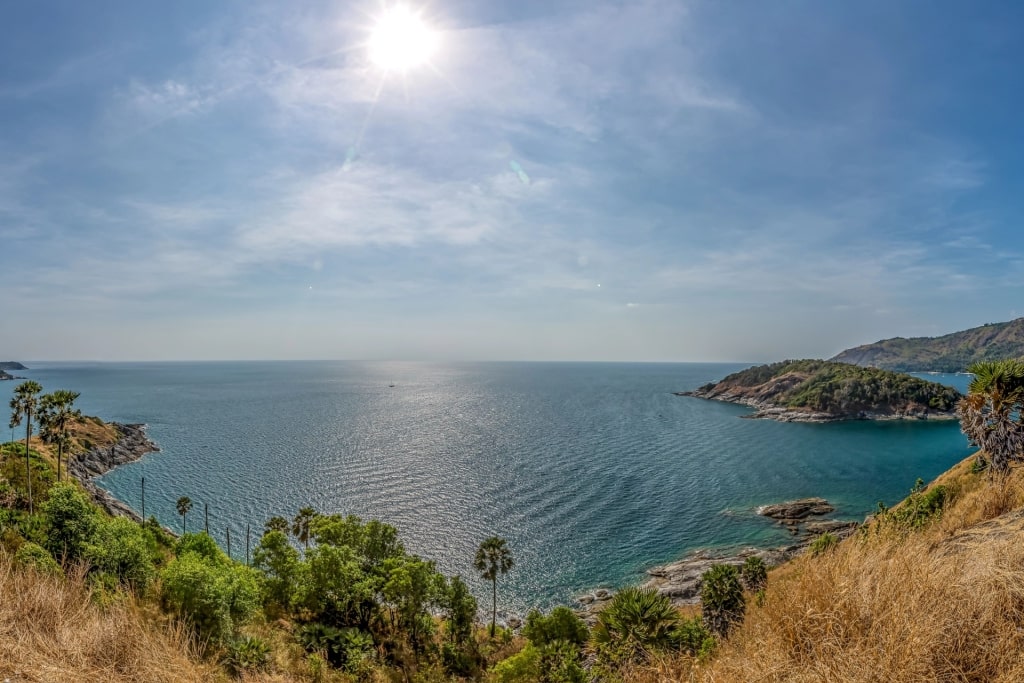
Viewpoint in Phuket
Winter is peak season in Phuket, with lower humidity, long, sunny days, and occasional short, sharp showers that clear the air. December to February is the busiest and most popular time, with perfect conditions for sightseeing, diving, and snorkeling.
January is the driest month, with just 1.4 inches (35mm) of rain on average, and as such, is the best time to go to Phuket. In an El Niño year, the dry period can be even hotter than usual.
Read: Best Things to Do in Phuket
Spring
The dry season draws to a close in spring, with April bringing changeable weather and more rainfall. April is actually the hottest month of the year, with an average of 84.3°F (29°C) and 4.9 inches (125mm) of rain, more than December to March, but considerably less than the summer months.
When Is Rainy Season?
Monsoon season in Phuket is from May to October, although the rainfall is not consistent throughout this period. May and September/October are statistically the rainiest months, as the monsoon has two peaks. September, for example, receives on average 12.8 inches (325mm) of rain.
When Is High Season?
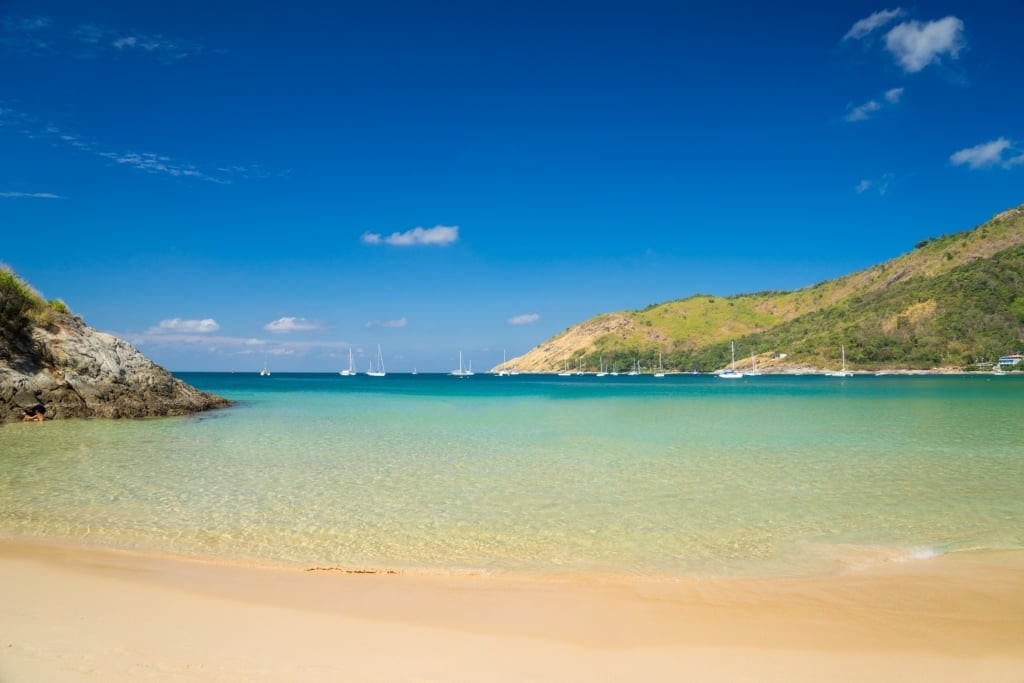
Nai Harn Beach
Phuket’s high season is from December to April, when the weather is generally fine, the skies blue, and the humidity lower. Sea breezes can temper the heat, too,
Although Thailand is a Buddhist country, Christmas is a big event, with tourists arriving from colder northern climates to enjoy the winter sun and the beaches.
Chinese New Year, which usually falls in February or March, is also festive and a popular time to visit Thailand.
When Is Shoulder Season?
Shoulder seasons in Phuket are just before the monsoon, in April, and just after, in November. This can be a good time to visit for fewer crowds, although April can be stiflingly hot. The sea is usually calmer during this period, with several hours of sunshine per day.
When Is Low Season?
Low season in Phuket is from May to October. People still visit on vacation during these months, but there will be a lot of rain in between sunny spells. The sea can be rough, particularly on the west coast, so this is not the best time for boat trips and snorkeling. Phuket’s beaches on the east coast are more sheltered and tend to have calmer conditions.
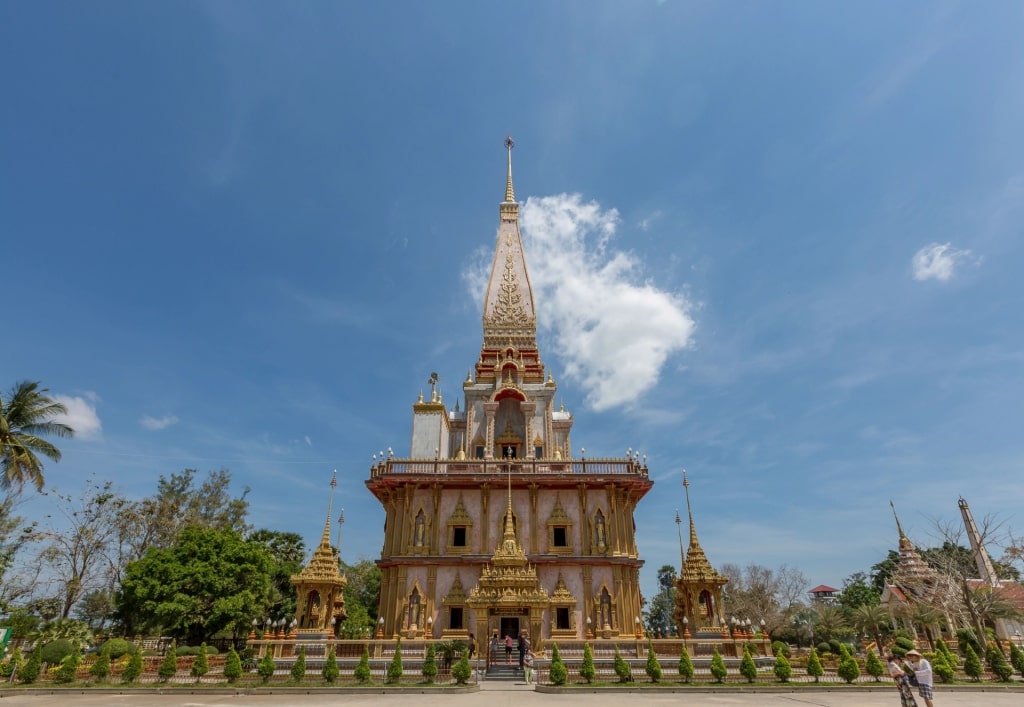
Wat Chalong
Are you dreaming of Phuket’s golden beaches and lush scenery? Browse our Phuket cruises and plan your Asian adventure.
